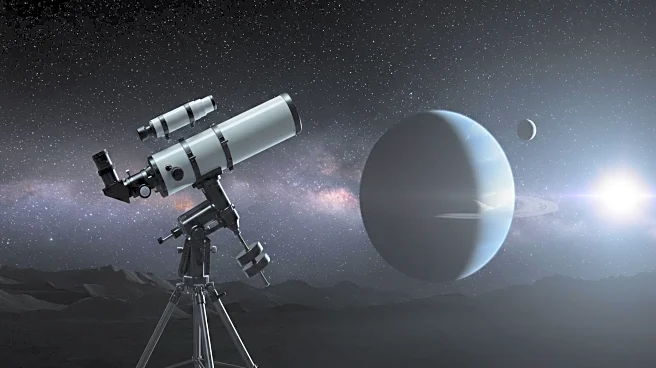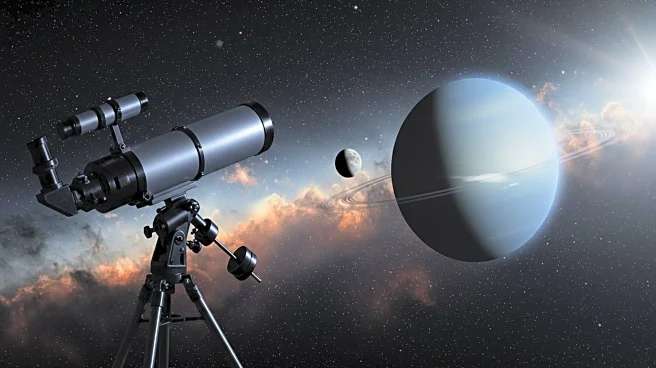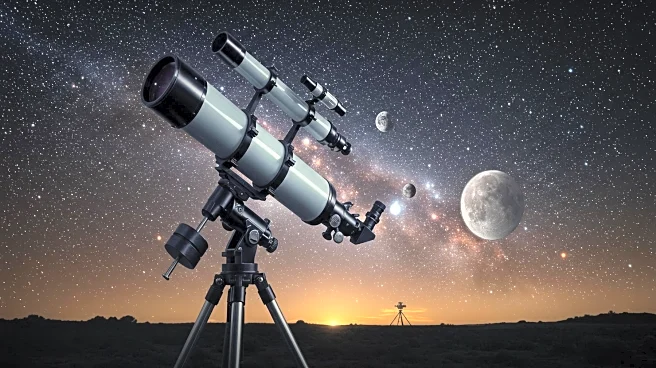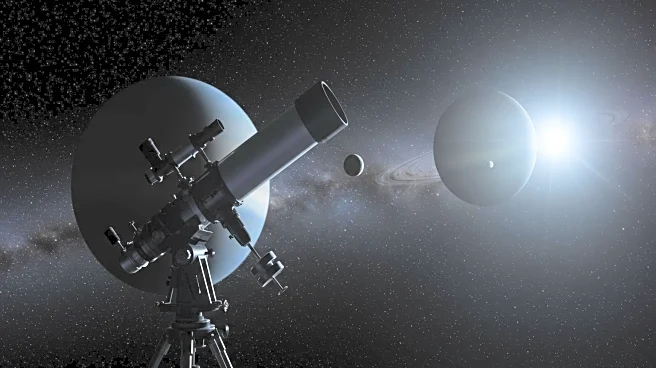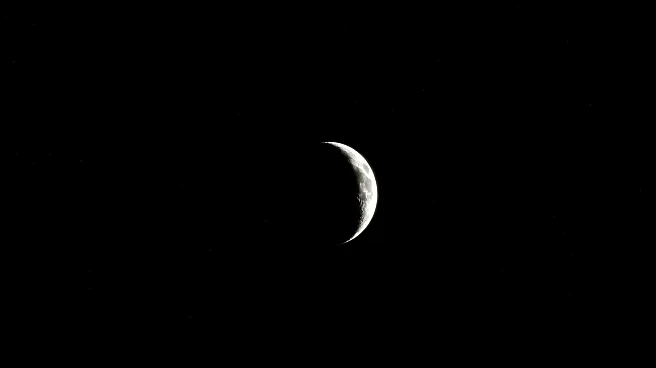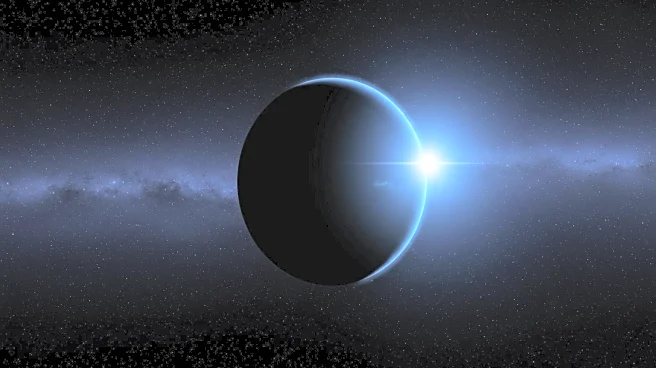Rapid Read • 7 min read
NASA's James Webb Space Telescope has identified a previously unknown moon orbiting Uranus, designated S/2025 U1. The moon, first spotted on February 2, is approximately six miles in diameter, which likely contributed to its previous invisibility to other telescopes and the Voyager 2 spacecraft. This discovery increases Uranus' known moons to 29, all named after literary characters from Shakespeare and Pope. The new moon's small size and faintness suggest that more undiscovered moons may exist, adding complexity to Uranus' satellite system.
AD
The discovery of a new moon around Uranus highlights the potential for further complexity within the planet's satellite system. This finding may influence future space missions aimed at studying Uranus, as understanding its moons can provide insights into planetary formation and dynamics. The discovery also emphasizes the capabilities of the James Webb Space Telescope in identifying celestial bodies that were previously undetected, advancing astronomical research and exploration. The naming of the moon will follow the tradition of literary references, contributing to cultural and scientific heritage.
The discovery has not yet undergone peer review, but it may lead to increased observational efforts to identify additional moons around Uranus. NASA and other space agencies are discussing potential missions to Uranus in the 2030s, which could explore the planet's atmosphere, rings, and moons in greater detail. The International Astronomical Union will eventually approve a formal name for the new moon, continuing the tradition of naming Uranus' moons after literary characters. This discovery may prompt further research into the interactions between Uranus' moons and rings.
AD
More Stories You Might Enjoy
